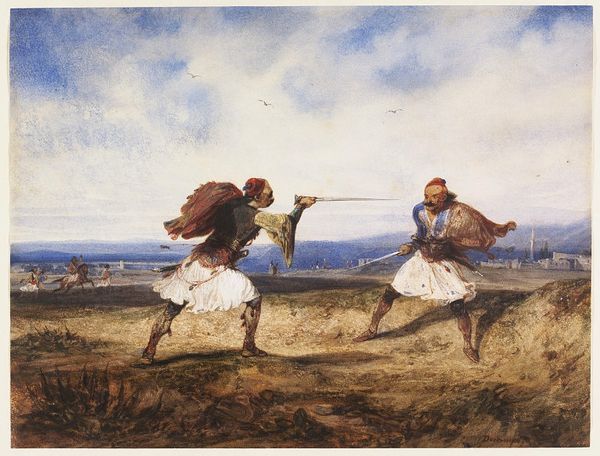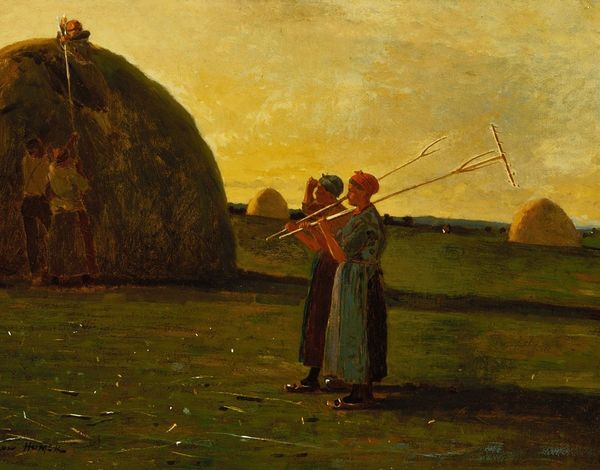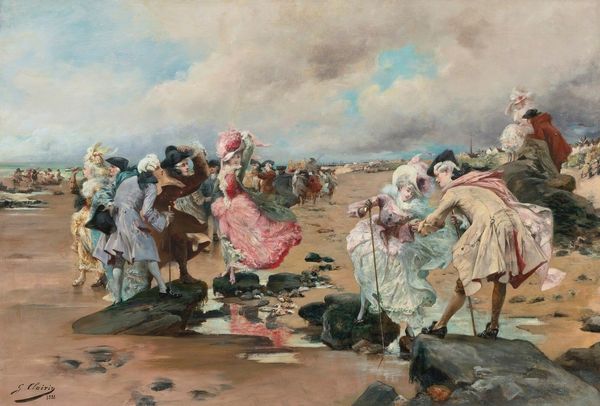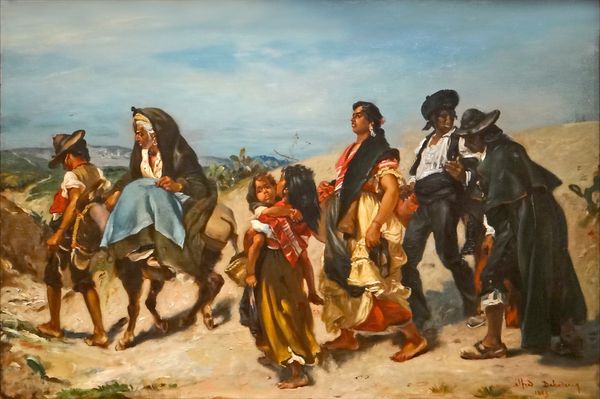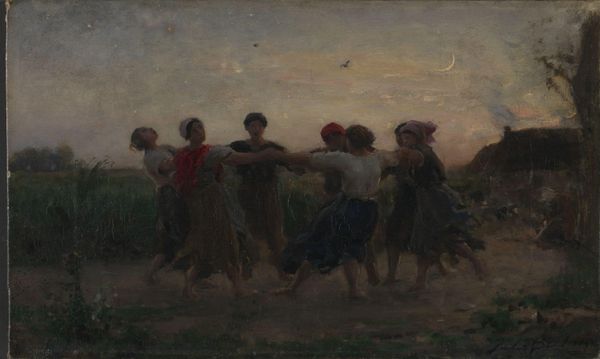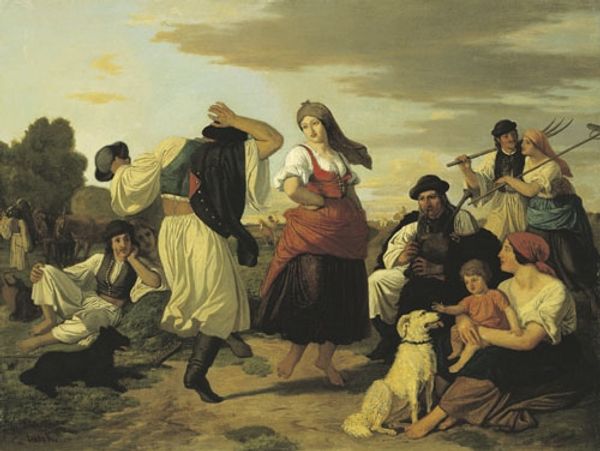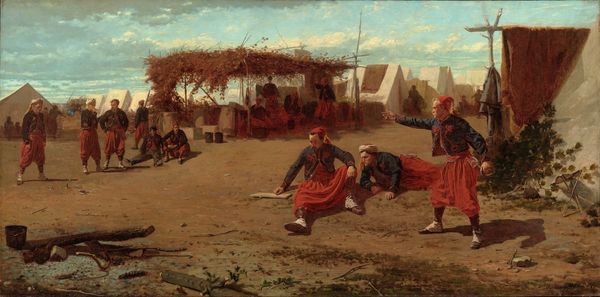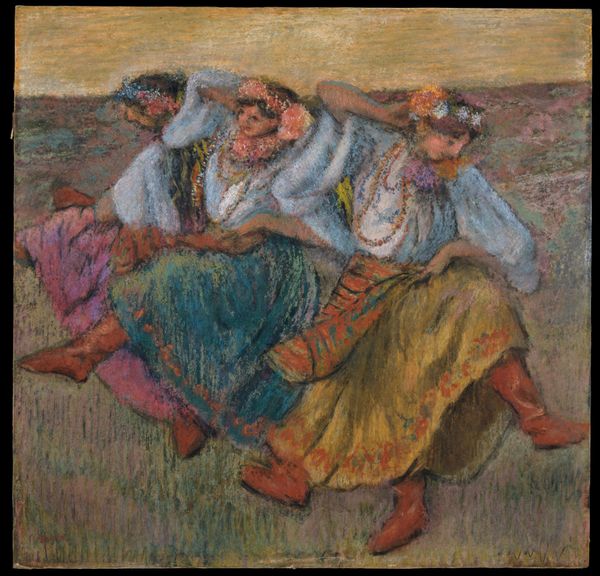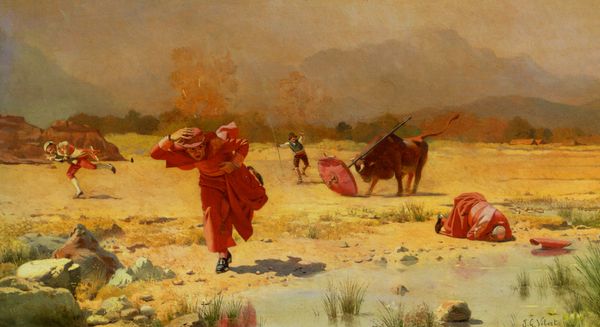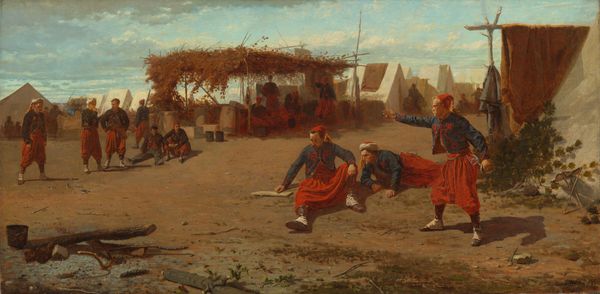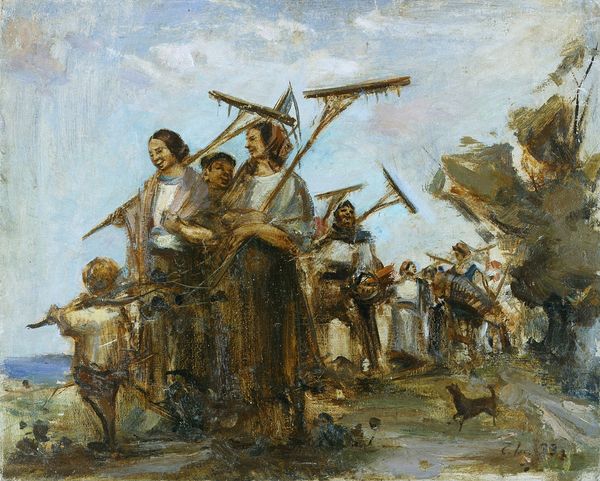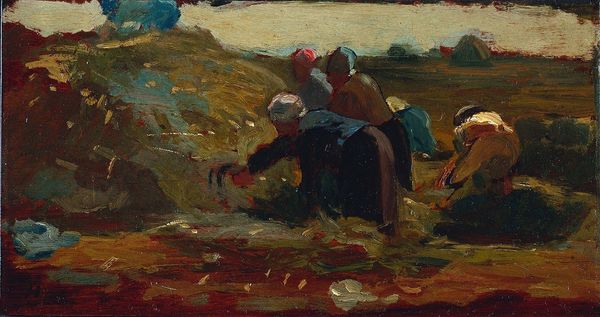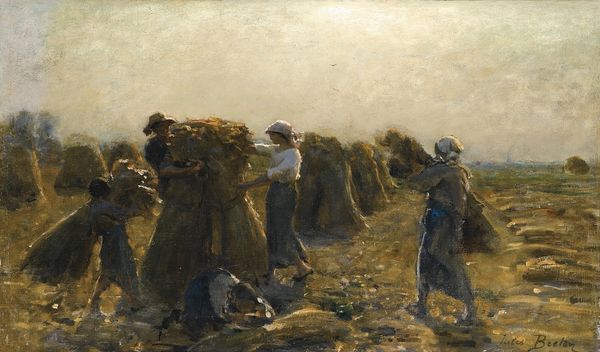
Dimensions: 13 x 28 cm
Copyright: Public domain
Curator: It has an unsettling immediacy. The palette feels so muted and hurried. Editor: Yes, there’s a definite urgency. What strikes you particularly? We’re looking at "Camp of Zouaves," an 1860 oil on panel piece by Silvestro Lega, one of the Macchiaioli painters. He was interested in modern life, and here he captures a very specific, though arguably romanticized, military scene. Curator: The figure running forward, blowing the horn, immediately draws my attention. It's the symbolic weight of the bugle call - in historical terms, this symbolizes awakening, battle readiness. But I wonder what call this specifically references. What do we know about these soldiers? Editor: They’re Zouaves – North African soldiers serving in the French army, but adopted by other European armies, including Italian ones during the Risorgimento. Lega himself fought alongside Garibaldi for Italian unification, so this likely reflects his direct experience of the period and perhaps commemorates the cultural mythos surrounding it. Curator: Right. Zouaves become symbolic. Looking at their clothing—the distinct, flowing cloaks—there is certainly a heightened quality. One figure even raises their arm, a gesture calling out from antiquity! It's interesting how symbols get layered; do we take it at face value? Is it supposed to have propaganda qualities? Editor: Well, consider Lega's participation in the Risorgimento. It's about nation-building. Paintings of military life during this time certainly aimed to inspire patriotism, depicting war as an exciting adventure that ordinary Italians can partake in to establish themselves in world history. Curator: Exactly, so the horn player isn't simply a harbinger of the moment, but a cultural artifact that conjures the idea of heroic sacrifice and service. He embodies Italian continuity as a soldier through time! I wonder if contemporary viewers made the same symbolic leaps? Editor: They probably were attuned to it in ways we perhaps aren't today. And given Lega’s circle, their aesthetic engagement with social and political ideals would be readily apparent. Curator: What becomes obvious here is the image's active, living relationship with social history—which transforms even plain earth tones into vessels filled with complex meanings. Editor: Yes, the painting becomes not just an image but an active participant in shaping the perception of a pivotal moment in Italian history. A successful fusion of Romantic and social art!
Comments
No comments
Be the first to comment and join the conversation on the ultimate creative platform.
